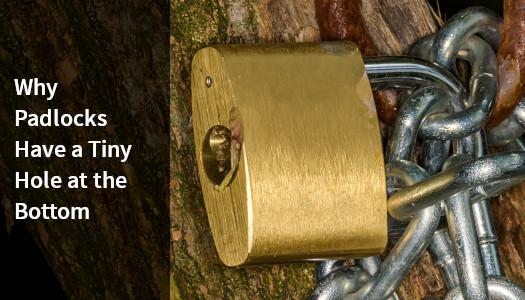Chances are you may have used a padlock, whether for your home or workplace. Have you ever noticed a tiny hole at the bottom of some padlocks? These pinholes may not be the most obvious thing but they serve an important purpose. We’re going to explore why these small holes on padlocks are so important.
What Does the Tiny Hole at the Bottom of a Padlock Do?
The pinhole at the bottom of a padlock works as a drainhole. Most often padlocks are used outdoors and can be exposed to the elements. These pinholes allow water to drain from the lock and helps prevent the internal components from rusting. Additionally, draining the water from locks in freezing cold environments helps stop water building up and freezing the inside. This can cause the internal mechanisms to seize until it thaws or severely damage the lock as there’s no room for expansion.
Another use for the small hole on the bottom of padlocks is to insert lubricant. Is your padlock is becoming difficult to open or can it not be opened at all? Insert the appropriate quality lubricant into the hole, let the lock stand for a bit and then attempt to open the padlock. Repeat the process if need be. Remember to check the manufacturer specifications regarding what lubricant they recommend for your padlock.
Do All Padlocks Have an Extra Hole at the Bottom?
Not every padlock has a hole for drainage and lubrication but many do. Some padlocks also have holes for drainage and lubrication on their sides, rather than on their base.
There are high quality weatherproof padlocks on the Australian market that are sealed in different ways to deal with the elements. Depending on your requirements and the level of protection you require, speak to your locksmith about a quality padlock to suit your needs.


